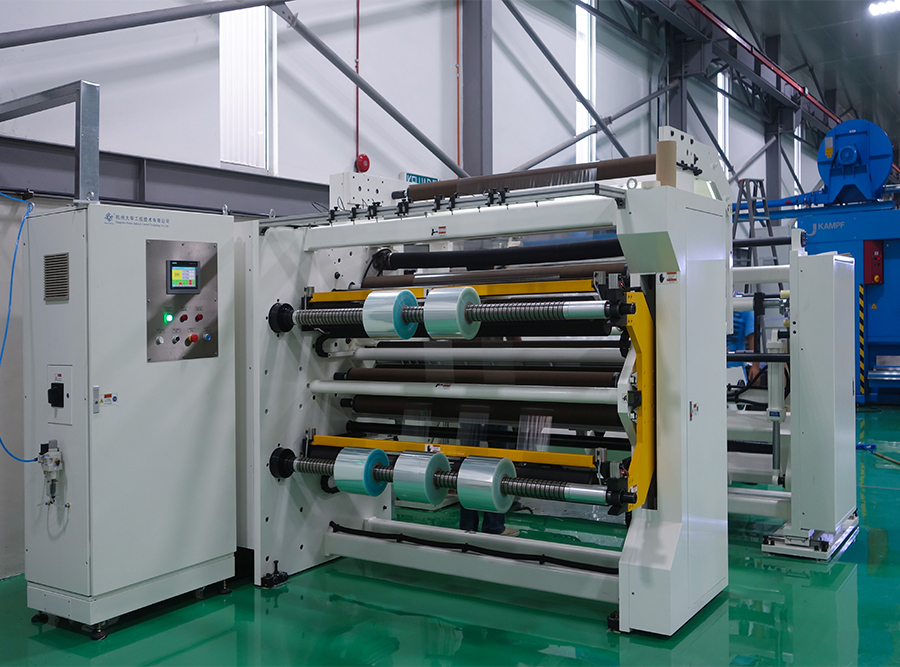
Plastic film slitters are designed to handle a wide range of film thicknesses and types, ensuring precise and efficient slitting for various applications. Here’s how they accommodate different thicknesses and types of plastic films:
Handling Different Thicknesses
Adjustable Blade Settings:Slitters often come with adjustable blade settings to handle different film thicknesses.Operators can adjust the blade pressure and cutting depth to accommodate films ranging from very thin (microns) to thicker films (millimeters).This flexibility ensures clean cuts without damaging the film, regardless of its thickness.
Variable Tension Control:Tension control systems in slitters are crucial for handling films of varying thicknesses.Tension can be adjusted to maintain the appropriate force on the film, preventing it from stretching or tearing during slitting.Ensures consistent slitting performance and prevents issues such as wrinkling or misalignment.
Multiple Blade Types:Different blade types (e.g., razor, shear, score) are used for films of varying thicknesses.Each blade type has specific characteristics that make it suitable for cutting films of certain thicknesses.Allows the slitter to handle a wide range of films efficiently by using the appropriate blade type for each material.
Precision Rollers and Guides:Precision rollers and guides are used to handle films of different thicknesses.These components help in maintaining consistent film feed and alignment, ensuring even pressure distribution.Prevents uneven cuts and helps manage films without damaging them, regardless of thickness.
Dynamic Speed Adjustment:Some slitters have dynamic speed control to match the thickness of the film.Thicker films may require slower speeds to ensure a clean cut, while thinner films can be processed at higher speeds.Improves cutting accuracy and reduces the risk of film damage.

Handling Different Types of Plastic Films
Blade Compatibility:Different plastic films require different blade types and configurations.Slitters can be equipped with blades designed for specific film types, such as polyethylene (PE), polypropylene (PP), or polyvinyl chloride (PVC).Ensures that each type of film is cut cleanly without causing issues like tearing or fraying.
Temperature and Humidity Control:Certain plastic films are sensitive to temperature and humidity.Slitters may be equipped with environmental control systems to maintain optimal conditions for specific films.
Benefit: Helps prevent film deformation or static issues that could affect the slitting process.
Surface Treatment Options:Films with surface treatments, such as coatings or laminations, require special handling.Slitters can be adjusted to accommodate these treatments, ensuring that the coating remains intact and the film is not damaged during slitting.Maintains the integrity and quality of the film's surface treatment.
Customizable Slitting Configurations:Slitters offer customizable configurations to handle a variety of film types.Operators can set up different slitting widths, blade angles, and tension levels based on the film type.Provides flexibility to process a wide range of films without needing to change the machine setup frequently.
By incorporating these features and practices, plastic film slitters can effectively handle different thicknesses and types of plastic films, ensuring high-quality, precise slitting for various applications.